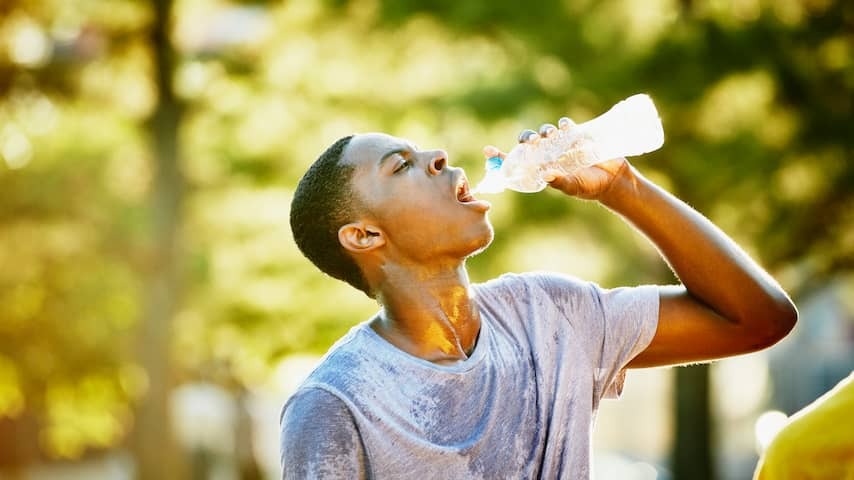
With temperatures like these past few days, rising above 25 degrees Celsius, exercising is much harder, but you might still want to work out outdoors. How do you approach that, and especially: how do you keep it up?
“To start, it’s important to avoid exercising at the hottest or most humid time of the day,” says personal trainer Bas Dijkstra. Therefore, preferably go early in the morning or later in the evening, when it is cooler.
Furthermore, there are a number of things you can pay attention to, even before you start exercising. “The clothes you wear, for example. Cotton breathes better than synthetic clothing,” says Dijkstra.
Furthermore, sweat evaporates less quickly in a humid environment, Erik Faneker adds. He teaches tennis and physical training and has a background in movement sciences. “The body is therefore less able to cool down. So choose not only breathable fabrics, but also moisture-wicking materials to allow the sweat to evaporate more effectively.”
And importantly: if you go exercising outside, apply sunscreen to the uncovered parts of your body.
Listen to your body and don’t do too much
Don’t forget to drink. According to Dijkstra, you already start doing that before you start with your first exercises.
“Drink plenty of water beforehand. You can check whether you have drunk enough or not based on your urine. If so, your urine is light and clear in color. If not, that darker color is a sign that you have not ingested enough moisture.”
After this preparation, it is important to consider whether you can handle the heat or humidity. “Listen to your body: if you don’t feel well, take it easy or stop. In the gym, take a little more rest between exercises. Accept that you may perform slightly less well on a hot or humid day than on a day when it is cooler,” says Dijkstra.
Don’t forget that your body needs to get used to new circumstances with frequent exercise, says Faneker. “In hot weather and high humidity, I build up slowly and stay away from maximum training during the first sessions.”
Here’s what to watch out for if you sweat a lot
If you want to get the most out of your training, it is important to keep an eye on your fluid balance. “If you exercise or move a lot at higher temperatures, you lose a lot of fluid,” says Dijkstra.
When you sweat a lot, you also lose electrolytes in addition to fluid. That is a collective name for all kinds of minerals that your body needs. Think of calcium and magnesium. “It is important to replenish them,” the personal trainer knows. “That can be done before, during or after your training.” You can find these minerals at the drugstore in tablet or powder form.
After a heavy training session, it is best to cool down slowly. “Less with strength or speed and do a cooling down,” says Dijkstra. “For example, after running, walk the last part. And if you have done strength training, finish the training with a run on the treadmill. It is not pleasant for your body to go from a very high heart rate to nothing.”
Take no cold shower
If you have now taken off those running shoes, you probably prefer to step under a cold shower. According to Dijkstra, that is not a good idea. “It is best to take a lukewarm shower.”
If you take a cold shower, your blood vessels contract. That can ensure that your body cannot lose heat as quickly. “With a lukewarm shower, your blood vessels constrict less, so the heat can be released better,” Dijkstra explains.
Furthermore, it can help to cool your body from the inside. “Think of drinking cold drinks, water ice creams and even slush.” Dijkstra can also recommend a sports drink with isotonic. An isotonic sports drink consists of 4 to 8 percent carbohydrates, or sugars.
That amounts to about 4 to 8 grams of sugars per 100 ml. According to the Nutrition Center, you can best replenish your body’s fluid balance with this drink. In addition, it is also important to eat a little. This way you can provide your body with the various nutrients that you consume during exercise.
To the question of whether you should even exercise in the open air when it is so humid, there is not one correct answer, says Dijkstra. “That differs per person. If you can handle it well, it might just be nice. But stay sensible, because it can still go wrong. People who can handle the sun well can also suddenly get sunstroke.”